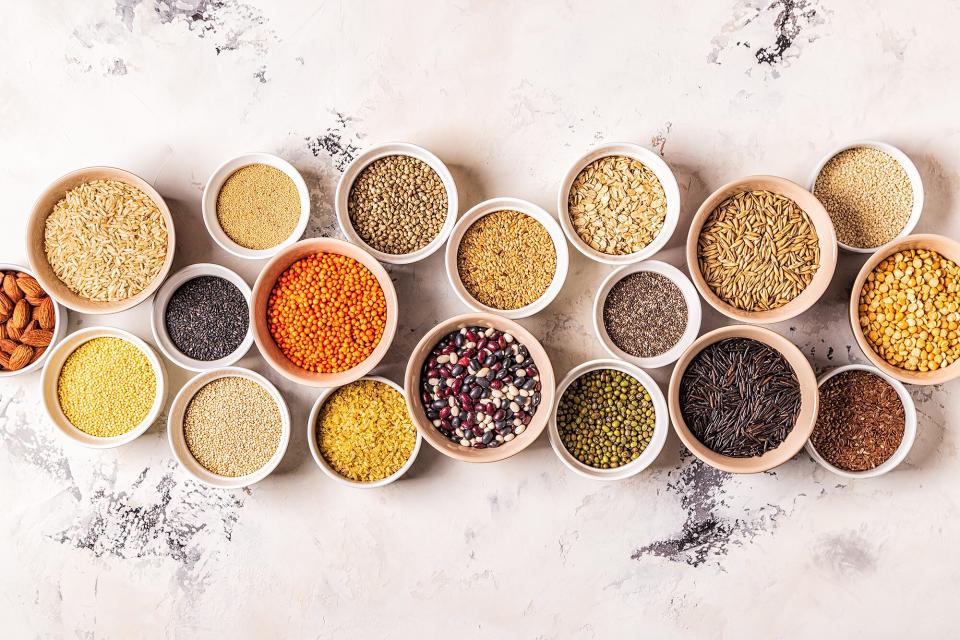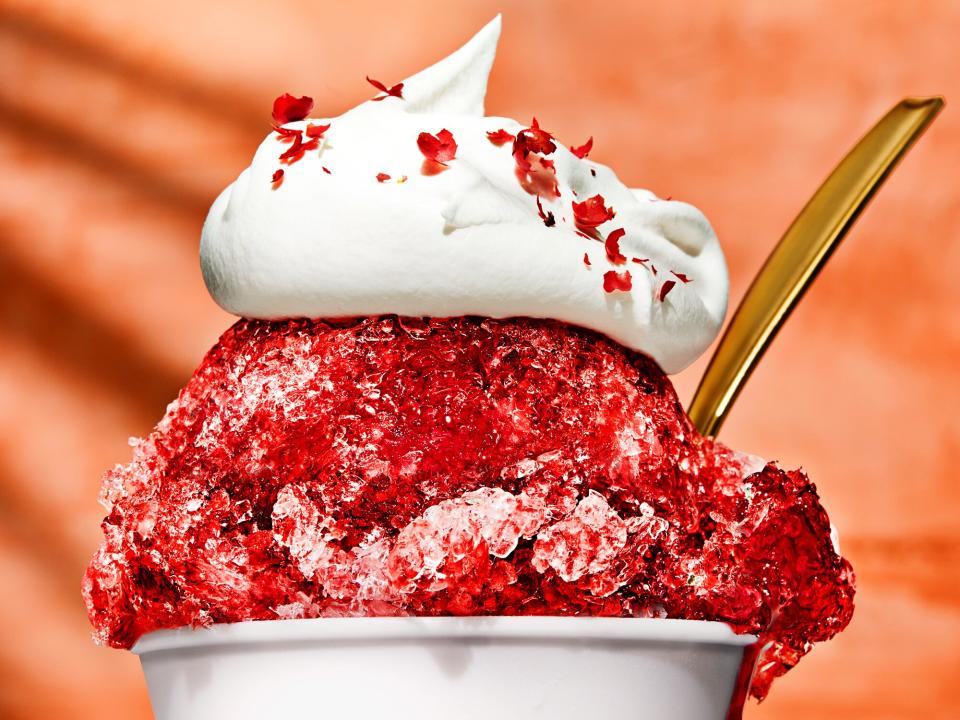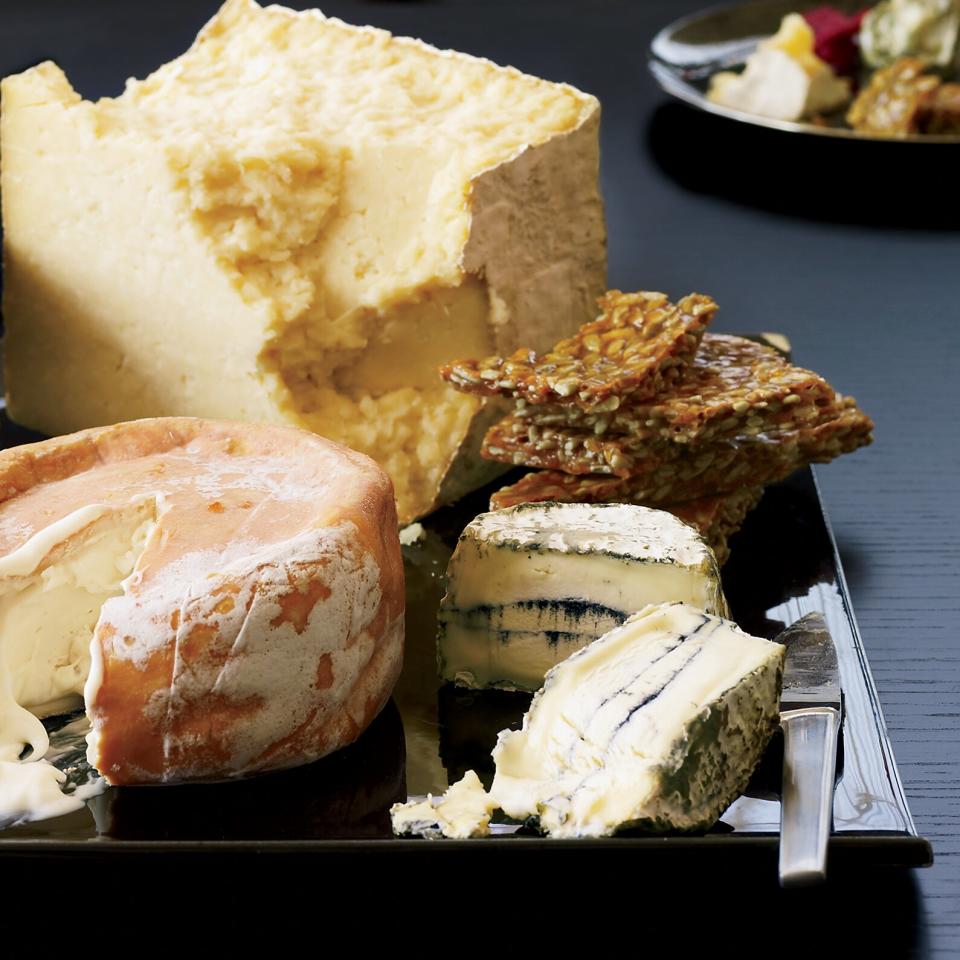7 Foods You'll Be Eating in 2022, According to Whole Foods
If 2020 was the year of sourdough, banana bread, and Dalgona coffee, and, let's be honest, 2021 was a total blur, what's on the menu for 2022?
According to Whole Foods Market, the hottest food trends to hit your table next year will include hibiscus, sunflower seeds, and prebiotic-boosted beverages. The supermarket chain recently released its annual list of the most anticipated food trends, which were compiled by a Trends Council made up of dozens of Whole Foods Market team members—including local foragers, regional and global buyers, and culinary experts. They considered a wide range of factors, according to Rachel Bukowski, Whole Foods Market senior team leader of product development.

Tatiana Bralnina / Getty Images
The Trends Council gathers predictions "based on decades of experience and expertise in product sourcing and studying consumer preferences, as well as in-depth workshopping with emerging and existing brands," Bukowski tells Food + Wine. Of the many factors the team took into consideration, one of the biggest was how the pandemic has impacted consumer buying habits. "Specifically, with the record growth we've seen in the dialed-down spirits category, and after seeing millennials and Gen Z-ers dabbling with 'drysolation' during the pandemic, we predict that buzz-less spirits will continue to grow in popularity in 2022," Bukowski says.
Below, read about some of the items Whole Foods Market thinks you'll be eating and drinking in the new year. (See here for all of their predictions.)
1. Produce from ultra-urban farming
In the last few years, urban farming has gotten a boost from technology, paving the way for the availability of hyper-local produce grown more sustainably. Try Gotham Greens arugula, butter lettuce, and Thai basil. The company first took root on the roof of WFM in Gowanus, Brooklyn, in 2013, with a 20,000-square-foot greenhouse, and is now working on its ninth regional hydroponic greenhouse. For fresh mushrooms, tap Smallhold, which runs a farm in Brooklyn, as well as mini farms with automated units in surprising spots around New York, including the Standard Hotel and Maison Yaki restaurant. They also sell kits so you can cultivate Blue Oyster or Lion's Mane mushrooms from home.
2. "Reducetarianism" foods
Much like some drinkers are opting to cut down on cocktails, or just cut down on the ABV (alcohol by volume) when they are drinking, reducetarianism refers to those who aren't ready to go full vegan, but want to significantly reduce their consumption of meat and other animal products. When they do eat animal products, though, reducetarians make sure they're high quality, like the Epic Provisions bison bacon cranberry bar, made with grass-fed bison, and Applegate Well-Carved burgers, made with a mix of both grass-fed beef and vegetables.
3. Hibiscus
High in vitamin C, the colorful shrub that's often found in teas has been beloved around the world for centuries. According to the trend squad, though, you'll be able to find it in lots of other foods and drinks next year. Try it in pink-hued Ruby Hibiscus Water, or in Kassumay fruit spreads—created by Senagalese Bacary Diatta using flowers cultivated in his home country—in flavors like hibiscus mixed with ginger or mango.
Recipe: Hibiscus Snow Cones

Photo by Jessica Pettway / Food Styling by Micah Morton / Prop Styling by Paola Andrea
4. Buzz-less spirits
As Bukowski noted, non-alcoholic spirits are booming this year. According to IWSR Drinks Market Analysis, the category is expected to expand 35-percent by 2023, and at Whole Foods Markets, it had record growth in 2021. There's a widening array of surprisingly delicious buzz-free drinks to try, including Greenbar Distillery lavender non-alcoholic bitters and soda, Ritual zero-proof whiskey, and Ghia.
Related: How Julia Bainbridge Has Helped Normalize Not Drinking Alcohol
5. Grains that give back
A growing list of companies that produce grains for pasta, cereals, and beer are zeroed in on farming practices that optimize for soil health. There's a wealth of products to show for it, from Annie's Mac and Cheese to Patagonia Provisions Long Root pale ale, made with Kernza perennial grain.
6. Sunflower seeds
Sunflower seed-based products like peanut butter-alternative SunButter have been popular in elementary school cafeterias for the last decade or so, thanks to an increased awareness of allergies to peanuts and other nuts. But the tiny seed is busting out of schools this year, making its way into crackers, ice cream, cheese, and more. Find them in elevated spreads like nut-free Mother Butter, Fix & Fogg Oaty Nut Butter, and vegan Ben & Jerry's flavors made with sunflower butter, including Creme Brulée Cookie and Mint Chocolate Cookie.
Recipe: Sunflower-Seed Brittle

© Tina Rupp
7. Functional Fizz
Bubbly beverages aren't usually known for boosting your health—at best there's benign seltzer, at worst, sugary soda—but there's another category emerging. Whole Foods is calling it "functional fizz" and it includes drinks like Poppi, infused with prebiotics to benefit gut health and boost immunity and heart health.

